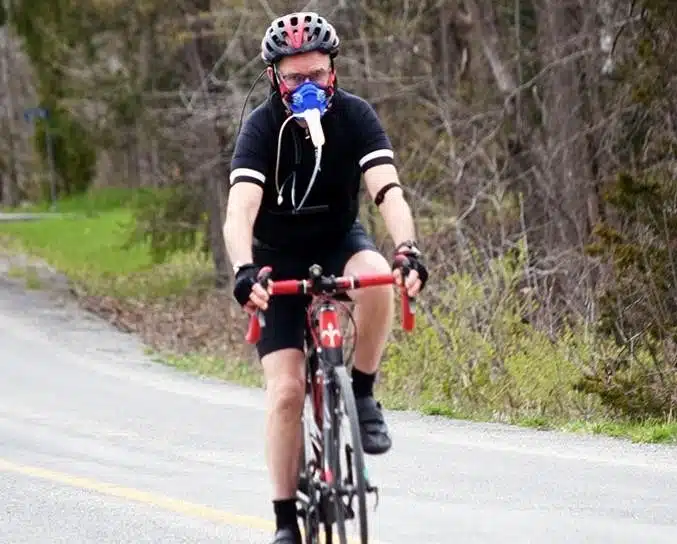
National Geographic has always been a pillar of learning, used to prop up bookcases in student apartments throughout the world. But gone (almost) are the days of the print edition, and the resulting overstocked shelves of Goodwill stores. The content, too, has altered, so that alongside the standard fare of paleontology and volcanology, readers can now learn about their inner geography. Most recently, I was heartened (in the literal sense) to read an article on VO2max, in which this metric was cited as “the strongest predictor of cardiovascular and all-cause mortality”. If National Geographic says so, it must be true, but to convince yourself, read the article HERE. Fortunately, I get to measure my VO2max as often as I care to, since I have unlimited access to Qubit’s new VOCO wearable metabolic testing system, pictured in use above. This, I am pleased to report, indicates I’m as fit as a butcher’s dog. To determine where you may rank on the continuum between armchair sloth and Olympic athlete, read on…
Dr. Stephen Hunt. President and CEO, Qubit Systems Inc.
What is VO2max
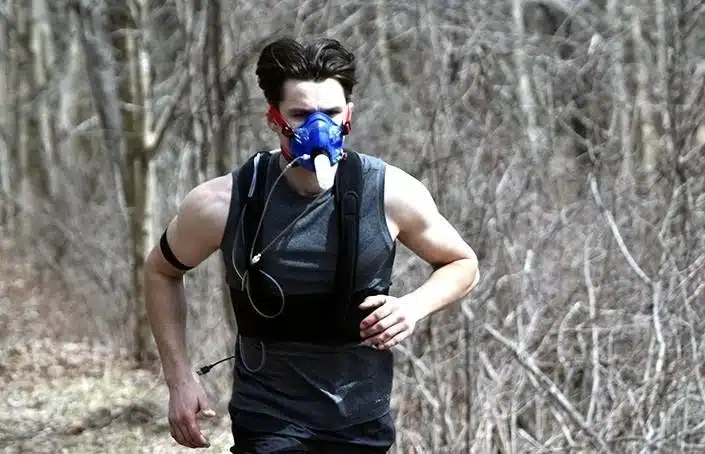
Simply put, VO2max is the maximum capacity of your body to consume oxygen during exercise, which is determined by numerous physiological factors related to cardiopulmonary fitness. Qubit’s VOCO device is a wearable cardiopulmonary exercise (CPX) testing system that measures the rate at which a person consumes O2 and produces CO2, while also measuring heart rate, breathing frequency and breath volume. This is done on a breath-by-breath basis, with VO2 and VCO2 data being reported in mL O2 per kg body weight per minute. VOCO is unobtrusive, allowing the subject to engage in numerous activities (running, cycling, climbing, kayaking, racquet sports etc.) without altering significantly the way in which they move naturally (if you can call skateboard-gymnastics natural movement).
So, where do I rank?
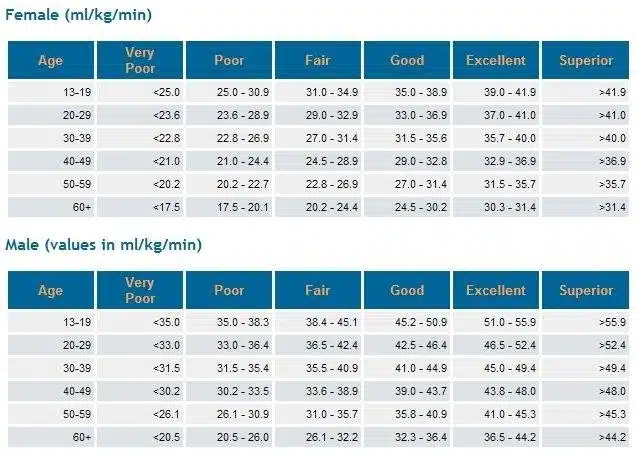
Well, I don’t know about you, but my VO2max is 40.5 mL O2/kg/min, which, for an old fart of 68 is not too shabby. Exercising to the point of exhaustion, though, is the only way to measure VO2max accurately, and I can attest that it’s not much fun. Also, to put things into perspective, Miguel Indurain, who won five Tours de France legitimately between 1991 and 1995, had a VO2max of 88.0, while Lance Armstrong, reviled for his illegitimacy between 1999 and 2005, had a VO2max of 84.0. There are Lamborghinis and there are souped-up Ford Fiestas. The point, though, is that according to the National Geographic article, “for every mL O2/kg/min you increase your VO2max, you decrease, on average, your risk of all-cause mortality (heart disease, stroke, cancer, dementia, infections) by 10%. I doubt, though, that ”all-cause mortality” includes going over the handlebars at 100 Km/h.
But doesn't my Smartwatch tell me my VO2max?
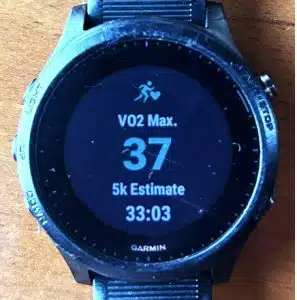
In a word… NO!
The only way to measure VO2max accurately is to measure O2 consumption directly using a CPX testing system such as VOCO. Smartwatches measure only heart rate, and use proprietary algorithms to predict VO2max from the data. Numerous published studies (e.g., HERE) have shown that such estimations tend to overestimate VO2max in individuals with poor fitness, and underestimate VO2max in very fit individuals, as evidenced by the insulting data displayed on my beat-up Garmin Forerunner. Mean absolute percentage error between the predicted and the actual VO2max values can be in excess of 15%, so sorry if that smartwatch of yours is telling you it’s OK to keep sitting on your backside.
What if my VO2max doesn't increase with training?
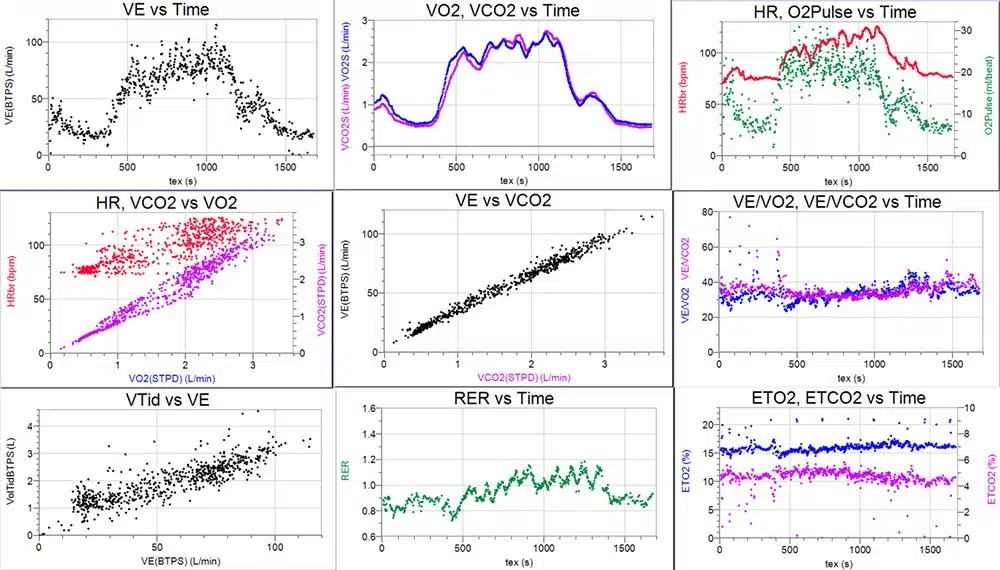
That’s always a possibility, but VOCO measures other parameters indicative of health and fitness. As stated in the National Geographic article, VO2max is not the only determinant of cardiopulmonary health; lactate threshold and critical power are also extremely important. Since VOCO incorporates a breath-by-breath CO2 analyzer, it monitors Respiratory Exchange Ratio, defined as VO2/VCO2. As an athlete becomes fatigued during exercise, anaerobic respiration begins to supplement oxidative phosphorylation in producing ATP, resulting in the production of lactic acid and a relative increase in VCO2 compared to VO2. Consequently, RER begins to increase at a point indicative of the lactate threshold. This is shown in VOCO software. VOCO software also generates an automated Wasserman 9-panel plot that shows the transition between sustainable and unsustainable exercise, marking critical power.
It all sounds very expensive
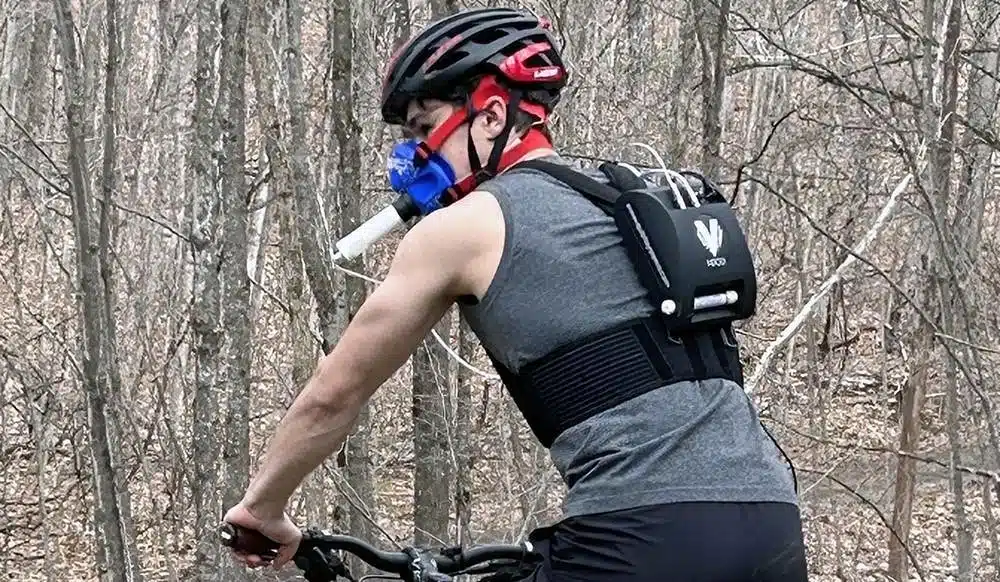
“Expensive” is a relative term. CPX testing systems used in hospitals typically cost in excess of $70,000 USD. A VOCO competitor for ambulatory CPX testing sells in a similar price range. However, we have designed VOCO for use in research, athletic training, and fitness testing in non-clinical applications, but have not sought accreditation for medical diagnostic use. As a result, the introductory price is a relatively inexpensive $12,000 USD for a system equivalent in function and accuracy to much costlier devices.
How do I know it's accurate?


Because we have tested all functions of VOCO using a gold-standard metabolic simulator. This “artificial lung” produces known VO2, VCO2 and RER values at different stroke frequencies equivalent to different breathing rates. In our extensive tests, VOCO data matched expected data with extreme precision. For full methodology, and to see the stats, you can download our validation paper HERE.

